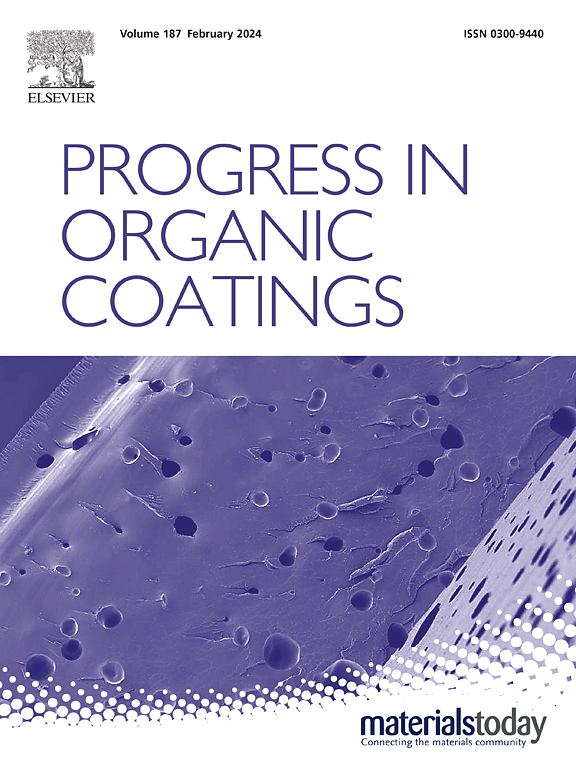From solution to surfaces: Engineering a water-soluble 1, 2-benzisothiazolin-3-one (BIT)-based antimicrobial conjugate for an antibacterial and antifouling brush-like coating
IF 6.5
2区 材料科学
Q1 CHEMISTRY, APPLIED
引用次数: 0
Abstract
1, 2-benzisothiazolin-3-one (BIT) is a potent and broad-spectrum biocide, however, the limited water solubility severely restricted its antimicrobial efficacy and bioavailability. In this study, we developed a molecular splicing strategy via integrating two bioactive compounds BIT and poly [2-(dimethylamino) ethyl methacrylate] (PDMAEMA), thus yielding a BIT-PDMAEMA conjugate with distinctly improved water solubility and potent in vitro antibacterial activity. The conjugates do not require to further post-synthesis modification, showing intrinsic antimicrobial property, bactericidal activity, low drug resistance frequency, and biofilm inhibition and eradication effects. Mechanistic investigation demonstrated that the conjugates possess great cell membrane- and cellular-thiol-groups-targeting capability, thus disrupting cell membranes and cellular proteins, leading to significant oxidative stress damage and intracellular content leakage, eventually causing bacteria lysis. After bacterial activity screening, the optimal conjugate armed with antifouling and anchoring blocks was grafted onto arbitrary materials as a non-leaching bioactive compound against bacteria and prohibiting bacteria adhesion. We further used a two-chamber assay to valid the non-leaching feature and mechanistic mode of action of the brush-like surface coating. As a proof of concept, the contact-active coating shows a great potential for inactivating microorganisms in environmental water samples from untreated underground and surface water. The present work highlights the potential of the structural modification of BIT derivatives with the combination of activity enhancing modalities.

求助全文
约1分钟内获得全文
求助全文
来源期刊

Progress in Organic Coatings
工程技术-材料科学:膜
CiteScore
11.40
自引率
15.20%
发文量
577
审稿时长
48 days
期刊介绍:
The aim of this international journal is to analyse and publicise the progress and current state of knowledge in the field of organic coatings and related materials. The Editors and the Editorial Board members will solicit both review and research papers from academic and industrial scientists who are actively engaged in research and development or, in the case of review papers, have extensive experience in the subject to be reviewed. Unsolicited manuscripts will be accepted if they meet the journal''s requirements. The journal publishes papers dealing with such subjects as:
• Chemical, physical and technological properties of organic coatings and related materials
• Problems and methods of preparation, manufacture and application of these materials
• Performance, testing and analysis.
 求助内容:
求助内容: 应助结果提醒方式:
应助结果提醒方式:


